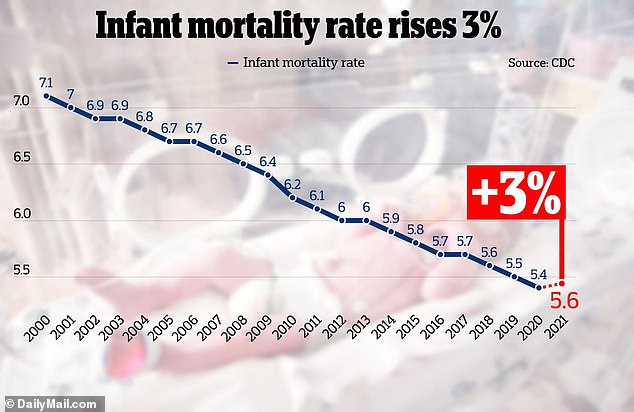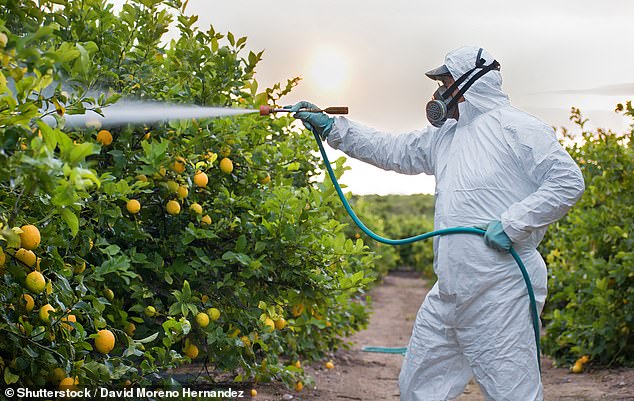Thousands of infant deaths have been linked to the rise of pesticide use on common crops.
Researchers at the University of Chicago found farmers have upped their use of chemical pesticides to protect their crops from insects, as the number of pests who are feeding on their produce has increased.
As farmers used more pesticides on their crops, the infant mortality rate rose by nearly eight percent, adding up to an additional 1,334 baby deaths.
For every one percent increase in pesticide use, there was a 0.25 percent increase in the infant mortality rate.
Behind the rise in insects – researchers discovered – is the accelerated decline of the bat population due to white-nose syndrome, a fungal disease that kills more than one million bats every year in North America.


Farmers have long relied on the winged animals as natural pesticides because they eat at least 40 percent of their body weight in insects each night, meaning with less bats, there are swarms of more insects that prompt the use of pesticides.
The research team found the decline of bats led to a 30 percent increase in synthetic pesticide use.
But the chemicals have been linked to increased risk of birth defects, low birth weight and fetal death.
Since WNS was first discovered in the US in 2006, it has killed nearly 7million bats in North America.
Dr Eyal Frank, study author and assistant professor at the University of Chicago, said: ‘Bats have gained a bad reputation as being something to fear, especially after reports of a possible linkage with the origins of Covid-19.
‘But bats do add value to society in their role as natural pesticides, and this study shows that their decline can be harmful to humans.’
The findings come as infant deaths climb in the US, which researchers have blamed on premature births, maternal pregnancy complications, and sudden infant death syndrome (SIDS).
In the study published in the journal Science, Dr Frank looked at 245 counties reporting cases of white-nose syndrome (WNS), which gets its name from the white fungus that grows around infected bats’ muzzles and wings.
The fungus, Pseudogymnoascus destructans, thrives in cold weather and infects bats while they hibernate for the winter.
The team found in counties reporting WNS, farmers increased their use of synthetic pesticides by 31 percent to make up for lost bat populations and protect their crops from the resulting increase of bugs eating away at them.
In those counties, infant deaths from natural causes increased by eight percent, accounting for 1,334 additional deaths between 2006 and 2017.
While this is only a preliminary link, the researchers believe it could offer some insight into the human cost of bat populations declining.

Dr Frank said: ‘When bats are no longer there to do their job in controlling insects, the costs to society are very large, but the cost of conserving bat populations is likely smaller.
‘More broadly, this study shows that wildlife adds value to society, and we need to better understand that value in order to inform policies to protect them.’
The study sheds new light on the causes of infant mortality, which has increased by about three percent in the last year, according to the latest CDC data.
According to the CDC, the top causes of infant mortality in 2021 were birth defects, preterm birth and low birth weight, injuries like suffocation, pregnancy complications and SIDS.
When the disease spreads to a group of hibernating bats, it kills 70 to 90 percent, according to the Center for Biological Diversity. But in some cases, it can wipe out entire colonies.
This could contribute to more than half of North American bats being at risk for severe decline over the next 15 years, according to researchers at nonprofit Bat Conservation International.
WNS has been detected in 34 US states and seven Canadian provinces.
Bats have also been shown to help pollinate plants like banana and mango trees and help spread seeds in rainforests. However, the animals can also carry rabies, so experts advise avoiding touching them.
Some research has also suggested that SARS-CoV-2, the virus behind the Covid-19 pandemic, originated in bats and either reached humans through another species or mutated enough to be able to spread to between people.

